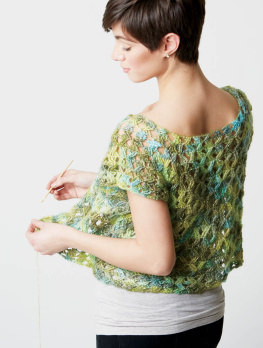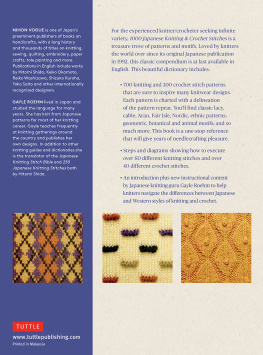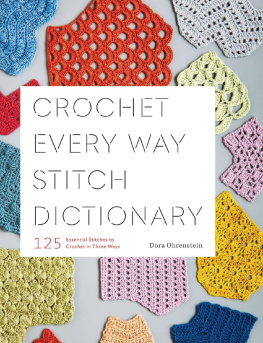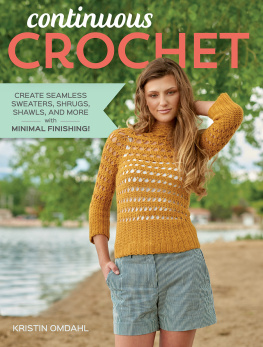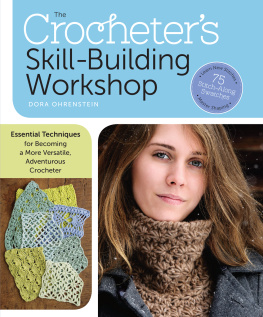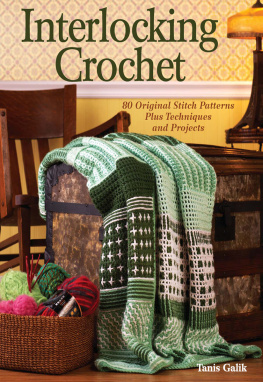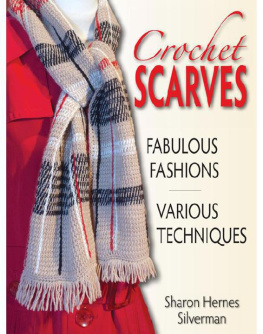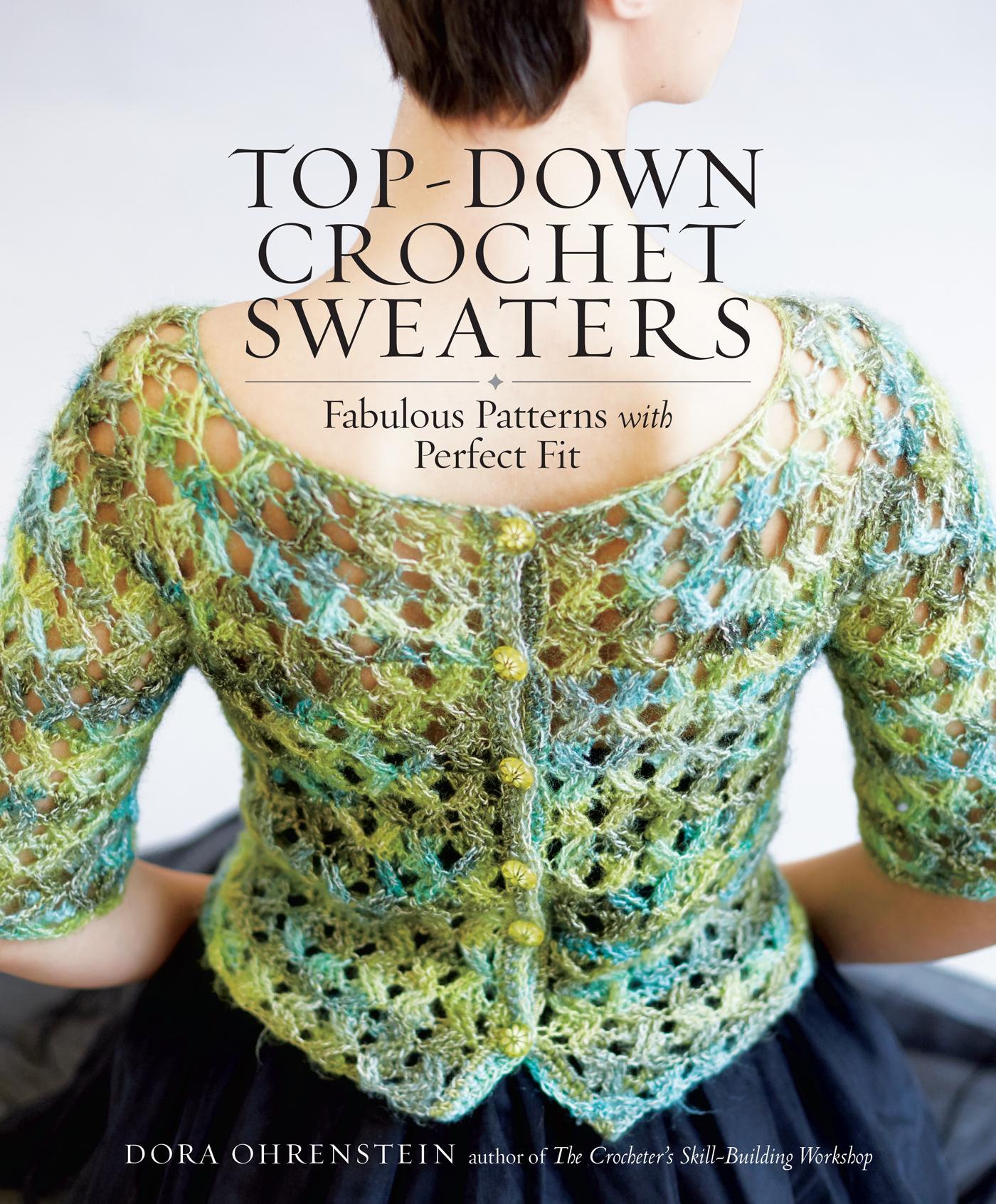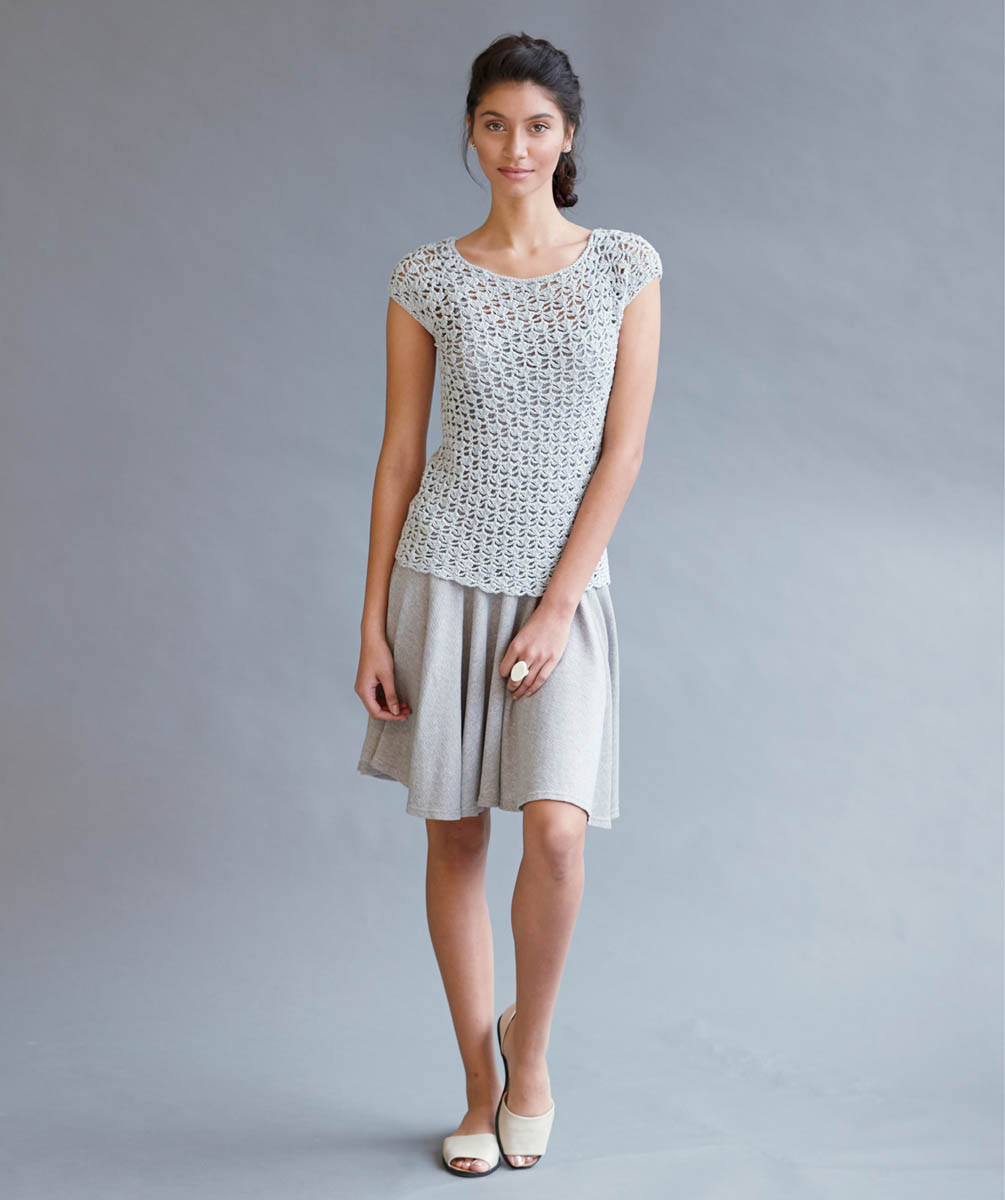Contents
Introduction
Why Crochet from the Top Down?
In my travels as a teacher and designer, Ive heard many crocheters voice one burning desire: to make beautiful garments that really fit. This book aims to provide the tools and knowledge to make that dream come true, with a focus on top-down, one-piece construction, a method that many favor.
When did the sweater as we know it today first appear? And where? Possibly in the late seventeenth century, but certainly by the beginning of the nineteenth century, the sweater, often called a jersey or jumper and sometimes referred to as a knitted frock in historic records, seems to have spontaneously appeared in many separate cultures and locations in the northern climes: the British Isles, Scandinavia, eastern Europe, but not North America.
Knitting in the Old Way
by Priscilla A. Gibson-Roberts
and Deborah Robson
In comparison to knitting, crochet as we know it is a younger art, having fully evolved only in the nineteenth century. At first, crochet was mainly used to make small purses, pillow tops, and edgings for linens. By the late nineteenth century, garment making was as common in crochet as it was in knitting, and patterns for sweaters, coats, dresses, mittens, hats, and undergarments for adults and children can be found in publications of that era.
Top-Down Construction Basics
Numerous methods for constructing sweaters also developed during the late 1800s, and its probable that the top-down method was among them. There are examples to be found in early twentieth century publications, though they are rare compared to other constructions. More commonly, garments were made starting at the bottom and working up to the neckline. The top-down method really took off with the 1996 publication of Barbara G. Walkers Knitting from the Top. Walkers detailed, practical, and friendly approach inspired many to try the technique, and interest has grown exponentially in the decades since.
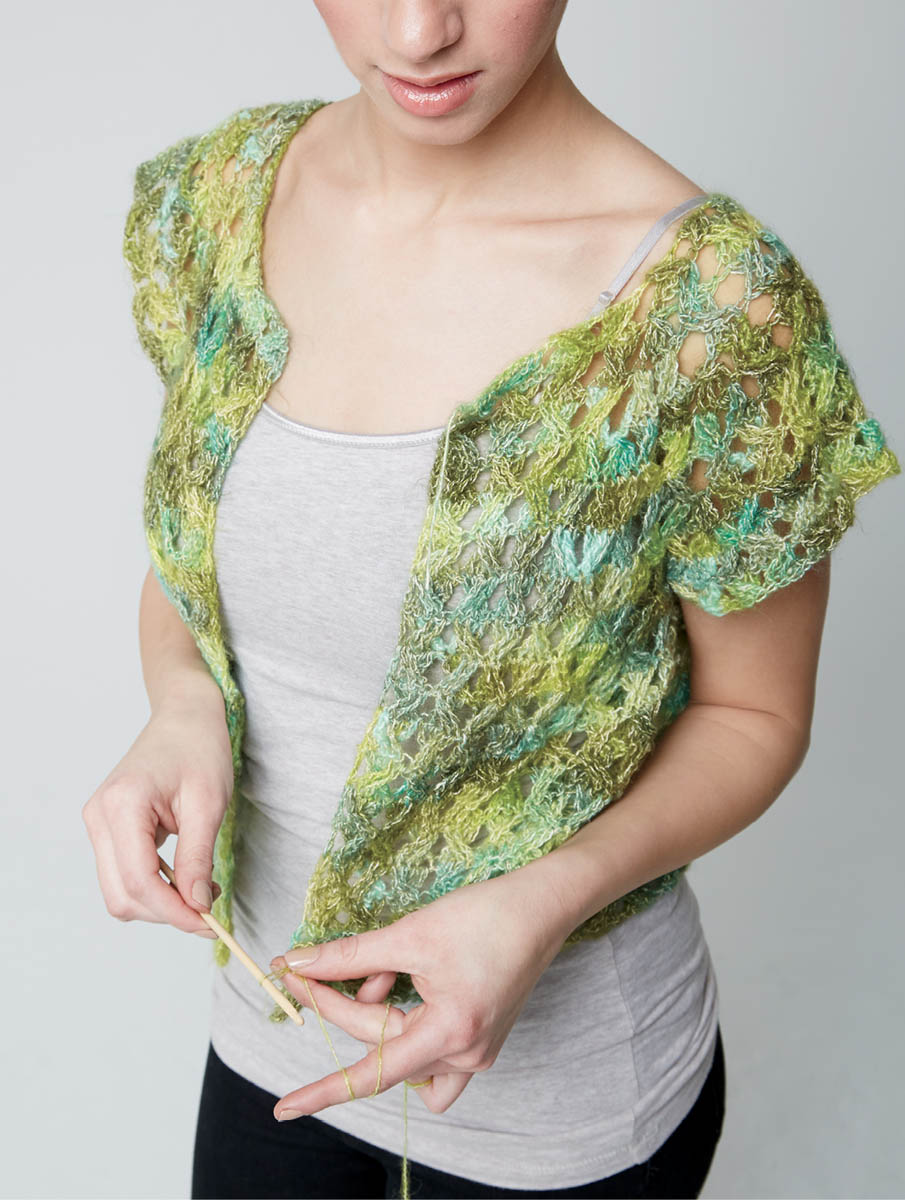
Sweater makers enthusiasm for top-down, one-piece, seamless designs remains strong, and its not hard to see why: you can avoid the tedium of making seams and gain the elegance of one-piece design. Theres a nice orderly system to the method, once you get the hang of it. Best of all, you can try the garment on as you make it, adjusting stitch and row counts along the way to ensure good fit. Among crocheters, the brilliant designer Doris Chans stunning crochet garments, all made top down, have sparked the popularity of this construction method.
When making a top-down sweater, you begin at the neckline and then build the garment from there, creating fabric that goes over the shoulders and upper torso, then making the rest of the body. The hallmark of top-down construction, and what distinguishes it from other methods, is the way the sweater is shaped as we work from the neck down to the underarm. When working from the bottom up, one must decrease to arrive at the smaller neck area, but when working top down, you are increasing to gain more fabric as you move from the neck to the torso. The change of direction means that stitch patterns face down that is, with the top of the stitch pointing to the bottom of the garment. The lovely result is that crochet increase patterns, in particular, look very pretty snaking down a raglan line.
The upper section of a garment, from the neck to the underarm, is called the yoke. This book features two styles of yoke shaping: circular and raglan. The pattern pairs Ava/Bettina as well as Zora/Genevieve are among the circular yokes, while the pairs Isola/Chloe and Nanette/Erde are examples of raglans. Each method has its merits and quirks, and I hope youll enjoy exploring both as much as I have.
This book showcases the top-down technique through fourteen original sweater patterns based on seven different yoke concepts. To make things even more interesting, each sweater in the pair is made with a different yarn, usually in a different gauge, in two different sizes, and with a few additional variations. Sometimes its the neckline thats varied, sometimes the silhouette is tighter or looser, the overall length of the garment changes, or a detail is added at the collar or cuff.
The hallmark of top-down construction, and what distinguishes it from other methods, is the way the sweater is shaped as we work from the neck down to the underarm.
Youll find a variety of garments for cold and warm weather: pullovers, cardigans, jackets, tunics, and vests. Many dont require advanced techniques or skills, and use basic stitches that any crocheter can master, while a few patterns are more advanced. These garments are designed to work on a range of bodies, easily customized to your fit and style. They have clean, simple lines that I think of as classic, meaning that they can work in a variety of yarns and fibers and can be made very close fitting or more roomy. Depending on your yarn choice and how you style each one for your body, they can have a casual or dressy look. Theyre the kind of sweaters that will stay beautiful and have a place in your wardrobe for a very long time.
Within these pages we will unpack and explore whats possible when making top-down garments, giving you, the crocheter, many options. I invite you to search this book for garments that are appealing, and then consider the skills you have, as well as those you want to learn. Dont neglect to study the advice given in the section on measurements and fit this will ensure your garment looks and feels great when youre wearing it.
A Note about Yarns
You wont find any designs in this book made with worsted-weight yarn. I find worsted-weight or heavier yarns work against drape in crochet garments, and drape is a quality I highly prize. It is what makes fabric hang well on your body and causes the garment to move fluidly as you move. Beautiful drape can be harder to achieve in crochet than in knitting, because our stitches have heft. But you certainly can make a crochet sweater that drapes as well as a knit one! Its really all about the right combination of elements: thinner yarns, flexible fibers, and tall or open stitches.
The sweaters in this book use yarns ranging in weight from DK to fingering. (I avoided lace weight simply because of the labor involved.) Fibers were carefully chosen to highlight the quality of drape, too, among them alpaca, silk, soft acrylics and cottons, linen, and Merino. The yarns represent a range of prices as well. In most of the sweater pairs, one is made with a higher-end yarn and the other with a budget-conscious yarn. Since very few commercial yarns are on the market forever, Ive chosen classic fibers that are likely to be available in a similar weight when youre searching for yarns in the future.

